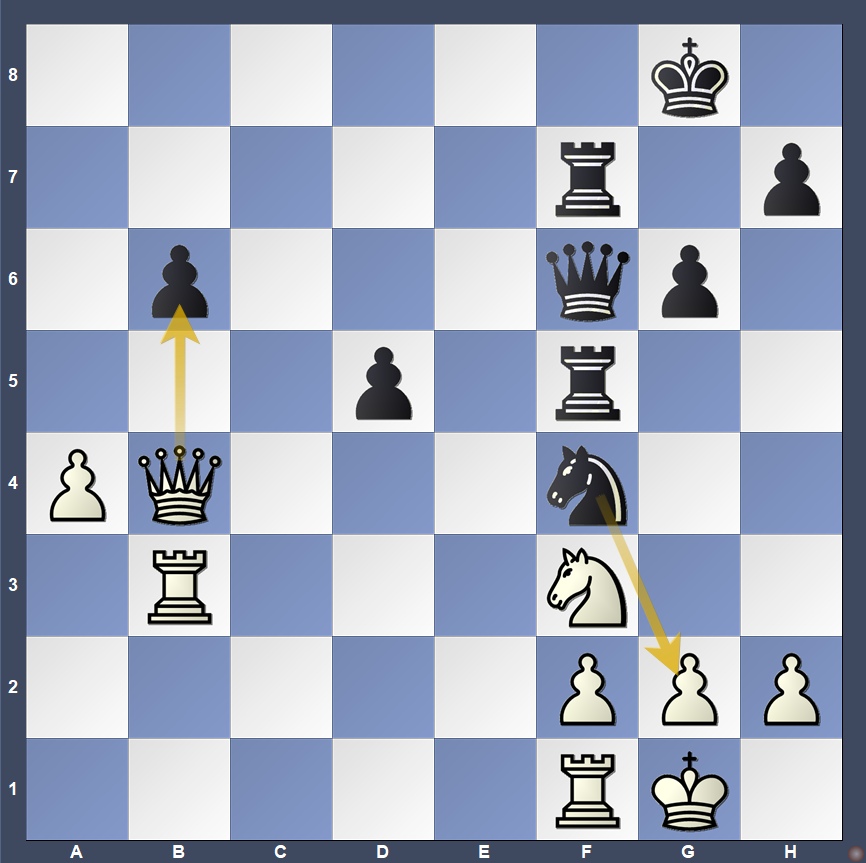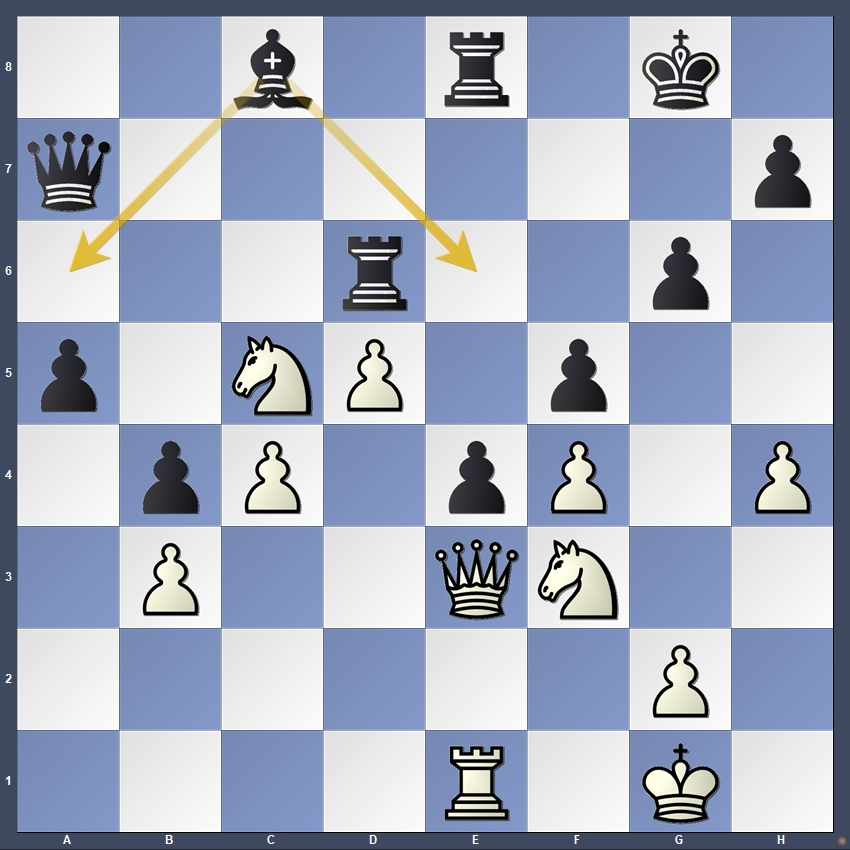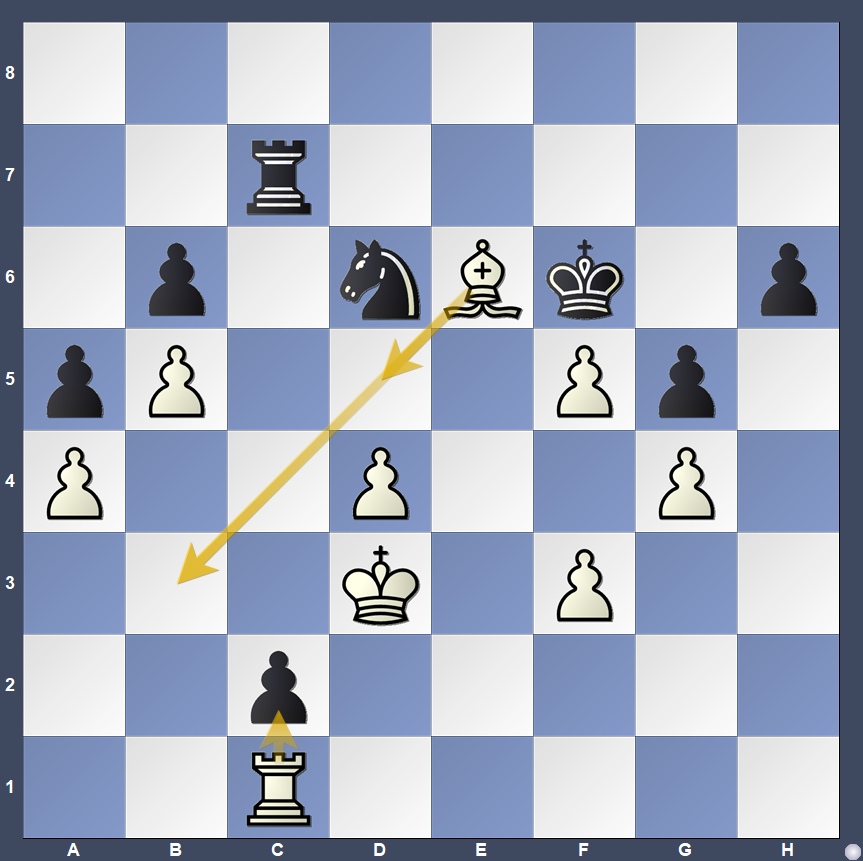
With 8/11, Anish Giri won the Open tournament outright, defeating Hans Niemann in the final round. Just half a point back, Matthias Bluebaum, Alireza Firouzja and Vincent Keymer shared second place. Thanks to a better tiebreak, it was Bluebaum who secured the second qualifying spot for the 2026 Candidates. In the Women’s event, on 8/11, Vaishali Rameshbabu and Kateryna Lagno tied for first and both qualified for the Candidates, but Vaishali took top spot on tiebreak. It was her second consecutive Grand Swiss victory – something never achieved before in either section.
Apart from qualifying for the Candidates for the third time in his career, being the sole winner meant Giri also pocketed $90,000.
In his first reaction to the victory, speaking in FIDE’s live broadcast, Giri said that the previous night he “visualised” a victory against Niemann: “There is this technique and… I saw myself win. Then I went a bit too far and started to think who will be in my team for the Candidates and I said I needed to stop at that point, as it was too far”.

The second place went to European Champion Matthias Bluebaum, who drew a tense game with Alireza Firouzja today. Firouzja finished third. The most unfortunate of the frontrunners was Vincent Keymer, who ended up fourth. He missed a chance to beat Bluebaum in round ten and went into the final day as sole leader only to fail to convert a better position against Erigaisi.
In the Women’s event, leaders Vaishali Rameshbabu and Kateryna Lagno both drew, sharing first place. The bronze went to Bibisara Assaubayeva, who missed a chance to tie for first after spoiling a winning position against Anna Muzychuk. She finished on 7.5/11, alongside Tan Zhongyi and Yuxin Song.

How the last day in Samarkand unfolded
Tension was palpable in the playing hall of the EXPO Centre in Samarkand, as players gathered for the final round of the 2025 FIDE Grand Swiss. On previous days, players often paused for photos with waiting fans. On the final day, the favourites rushed straight inside, razor-focused on their games.
The games started at 2 PM, an hour earlier than in the previous 10 rounds, to accommodate the closing ceremony and prize giving scheduled for 9 PM local time in Samarkand.
At stake were two places leading to the 2026 Candidates as well as a hefty prize fund of $855,000. In the Open section, with 7/10, five players were in the race for the top two places – Bluebaum, Firouzja, Giri, Niemann and Keymer. In theory, tiebreaks kept three more players in contention on 6.5/10 – Mishra, Erigaisi and Woodward. In the Women’s Grand Swiss – Vaishali and Lagno as the two leaders, as well as Assaubayeva, Tan and Song were in the race to be the winner. Out of the five, Tan – a former Women’s World Champion – has already qualified for the 2026 Candidates, thanks to finishing third in the Grand Prix.
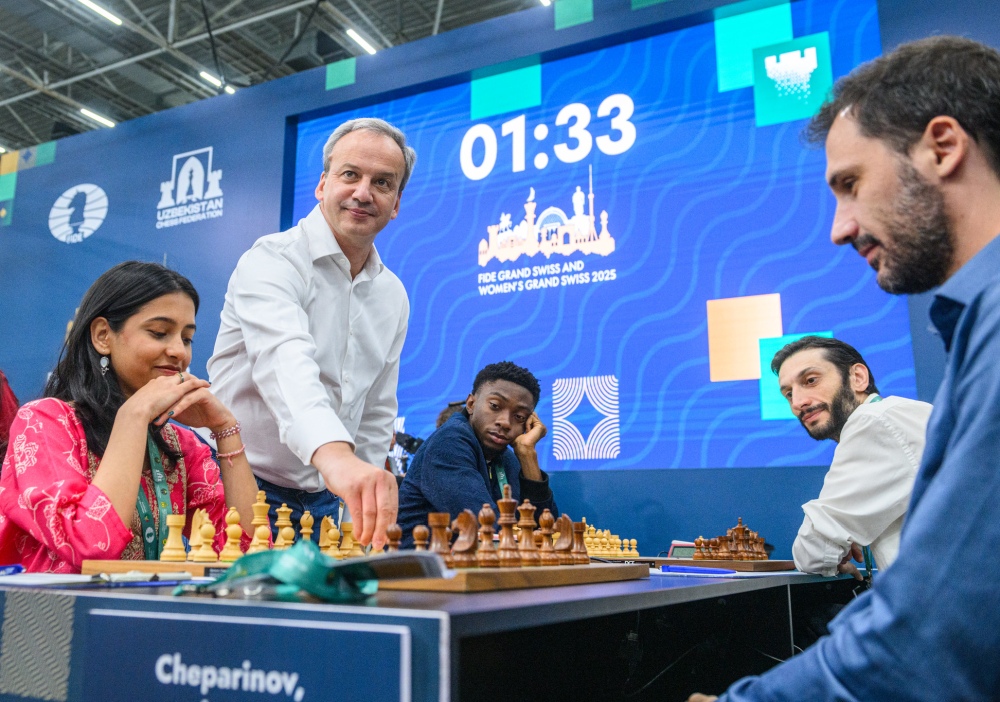
Continuing the tournament’s departure from the tradition of making ceremonial moves only on the top board, FIDE President Arkady Dvorkovich made the first move on board 57 in the Open, in the game between Divya Deshmukh and Ivan Cheparinov.
The Open
The first to qualify for the Candidates from the Open section was the seasoned player Anish Giri. In one of the most anticipated duels of the final round, he defeated the American Hans Niemann in just over four hours and fifteen minutes.
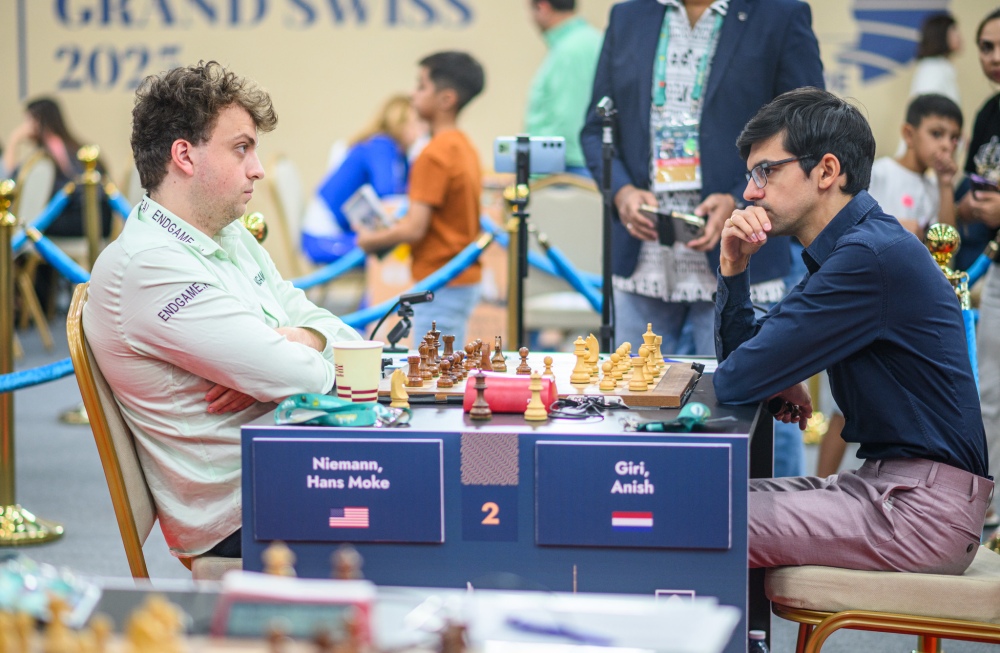
Both players were under pressure to win if they wanted to secure a spot in the Candidates. For Niemann, the game unfolded in the worst possible way.
Playing the English Opening as White, Giri obtained the lasting two-bishop advantage and gradually gained command by advancing pawns on the kingside and then breaking through on the opposite wing. The critical moment of the game came on move 32.
Choosing between 32…bxc5? and 32…Nxc5 (which offered some chances for a long resistance) Niemann opted for the former, which was a serious mistake.
Analysing this position in the FIDE tournament broadcast after the game, Giri said: “I had a difficult choice – I could just move the bishop or take [with the rook] on b3. My logic was that, if moving the bishop wins, it’s OK. But if taking on b3 wins and I don’t do it and don’t qualify for the Candidates, I will never forgive myself. And that’s why I took [the knight on b3, with the rook]”.
33.Rxb3! Bxb3 34.Bxc5 Kd7 35.Bxd6 Kxd6 36.g5! This bishop endgame with an extra pawn is winning for White and Giri sealed the deal nine moves later.
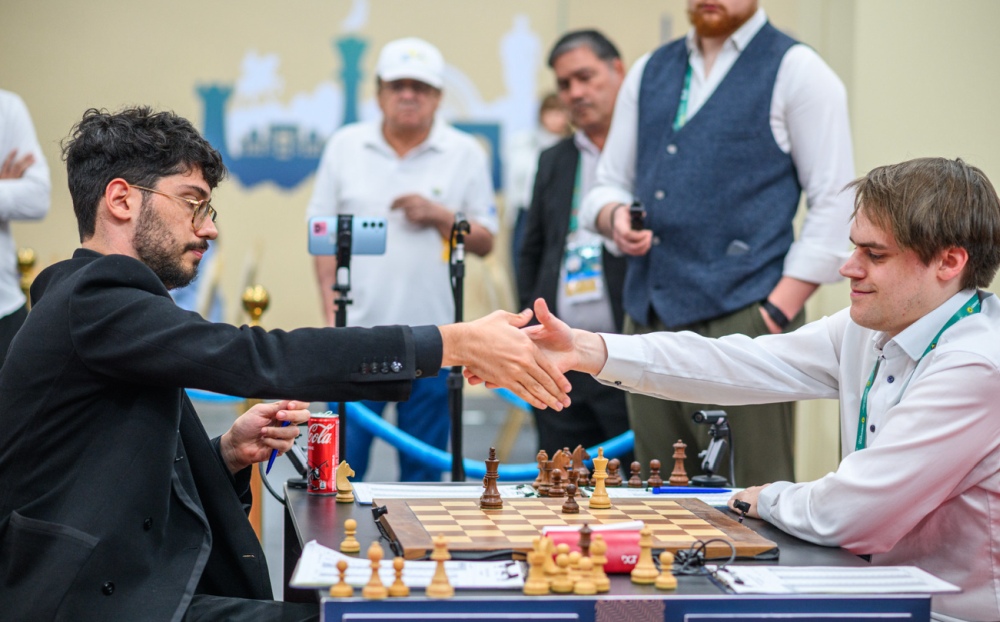
Despite the win there was a very small chance that Giri would not qualify given the poor tiebreak. However, soon after his win the result on board one came in – Bluebaum and Firouzja split a point in the Dutch Defence.
Although the position is even, there is a lot of tension on the board.
26…Nxg2 27.Qxb6! Bluebaum counters any idea from Black to get more tactical. After 27…Qxb6 28.Qxb6 Nf4 29.Ne4 an even endgame emerged on the board. With both opponents playing precisely, a draw on move 56 came as a logical outcome.
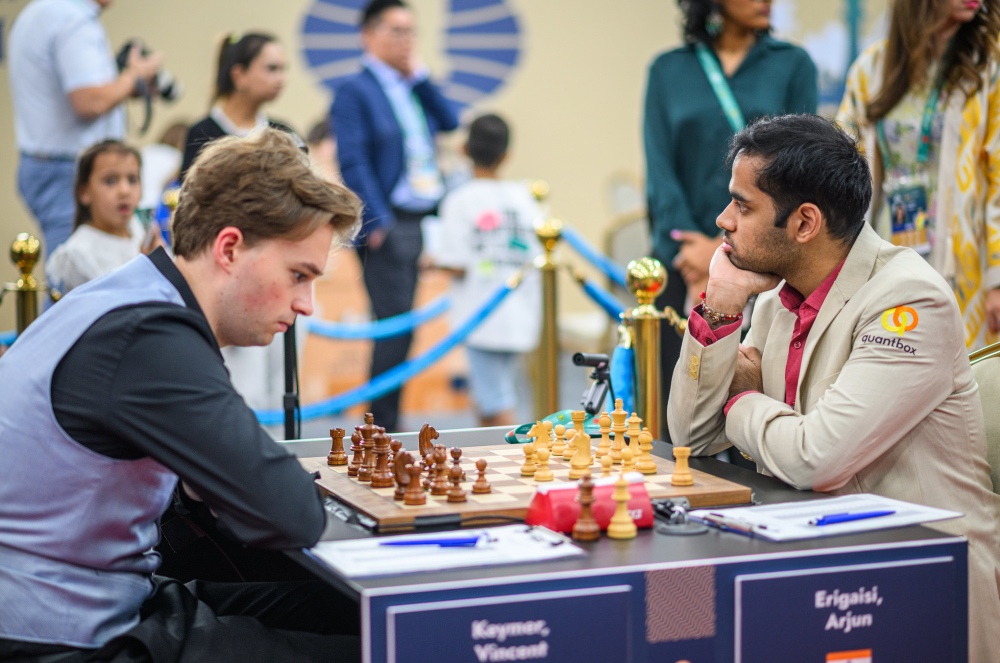
Not long after this game, the duel between Arjun Erigaisi and Vincent Keymer also finished in a draw. Arjun correctly sacrificed an exchange in a rare line of the Queen’s Indian and obtained a sufficient compensation. After several imprecisions on his part, White’s initiative petered out and Vincent got a real chance to convert his advantage. To achieve this task, Vincent had to find a fantastic move in the following position:
This was the high point of Keymer’s advantage. He had a straightforward win here, but it was very difficult to spot.
The winning move is paradoxical 31…Be6!! placing his bishop under a double attack. The idea behind this fantastic move is to trade the queens transposing into a winning endgame, thanks to a5-a4 idea. Surprisingly White has no sufficient defence. But it is hard to blame him for missing a resource only engines could spot.
Instead the more natural 31…Ba6 was played. Black was still better and pressured White to the very end but Arjun held his ground with tenacious defence.
This meant that Keymer ended up in shared second place, with Firouzja and Bluebaum. However, because of a better tiebreak, it was Bluebaum who took the second spot, qualifying for the Candidates.
Iran’s Parham Maghsoodloo, who was leading in the event for several rounds but stumbled towards the end, made a draw today as Black with Aditya Mittal. The Iranian finished the tournament on 6/11, in the middle of the scoreboard. Rating favourite Praggnanandhaa R also finished on 6/11, drawing in the last game as Black, with Nikolas Theodorou.
World Champion Gukesh D won in the last round. He defeated Ukraine’s Andrei Volokitin with the black pieces, finishing the tournament on 6/11.
The Women’s event: Vaishali and Lagno qualify for the Candidates with a draw
Vaishali Rameshbabu and Kateryna Lagno reached the Candidates after securing top two spots in the Women’s event. Both had the best tiebreaks, meaning a draw in the final round was enough to secure qualification.
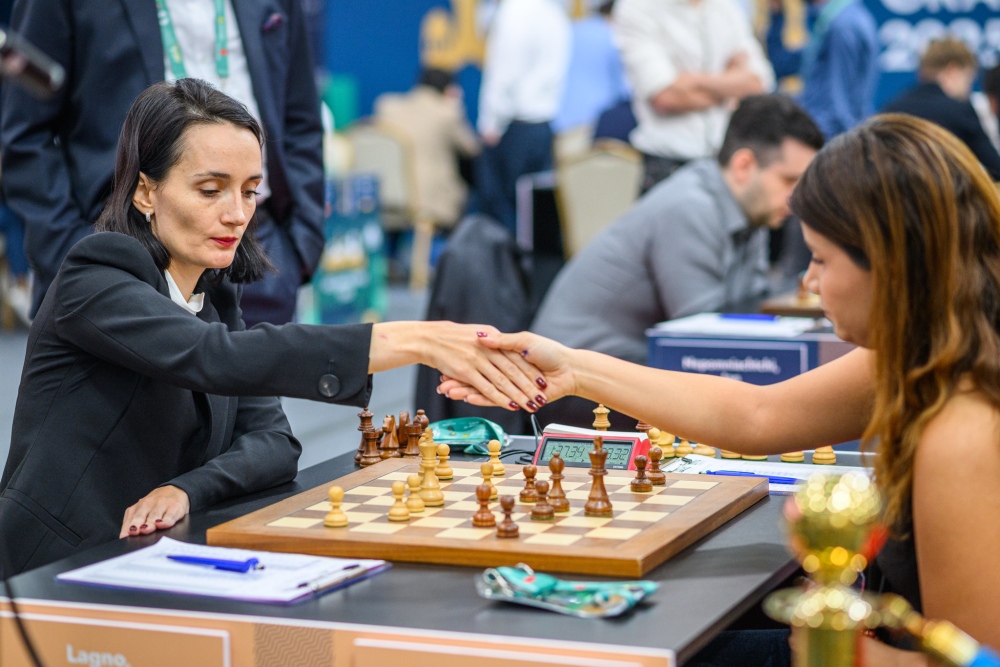
The first game to finish in the Women’s event was on board two, where co-leader Kateryna Lagno, playing White, drew against Azerbaijan’s Ulviyya Fataliyeva. In a Queen’s Gambit Declined, Lagno simplified early and forced a threefold repetition in just 30 moves.
Vaishali Rameshbabu faced a far longer battle on board one, lasting three and a half hours as Black against former Women’s World Champion Tan Zhongyi.
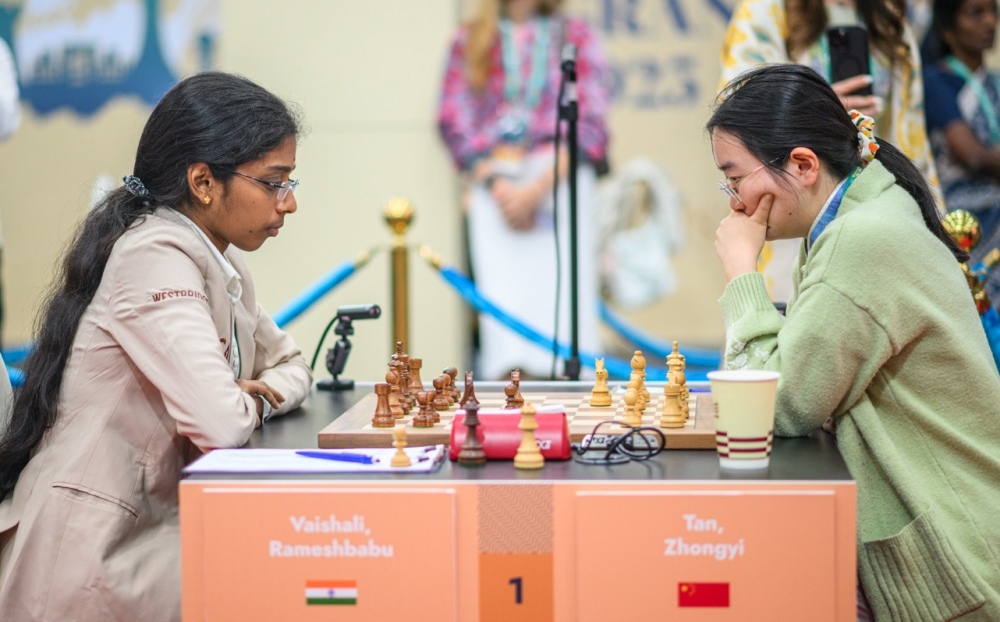
Playing the English, Tan – who had previously already qualified for the 2026 Candidates – was in the mood for a fight.
Vaishali showed accuracy in a slightly worse position, equalising with a timely and well-calculated pawn sacrifice
21…c3! 22.bc3 Nb5! Regaining the pawn. The point is that 23.c4 fails to 23…Nd4! winning at least an exchange.
26.Rb2 Ra8! Another precise move by Vaishali. Now Black liquidates into a drawish endgame. 27.Rxb5 Ra1 28.Rb8+ Bf8 29.Bf1 Rxc1 30.Rxc8 Kg1
White had an extra pawn, but with active pieces and opposite-coloured bishops, Black was out of danger. The opponents shook hands and split the point on move 43.
With this draw, Vaishali secured joint first place with Kateryna Lagno – both qualifying for the Candidates by virtue of the best tiebreaks over the chasing pack. This is a second consecutive victory for Vaishali in the Grand Swiss – something which has not been achieved before in either the Women’s or the Open section.
Song Yuxin and Irina Krush drew on board three, both finishing half a point behind the leaders.
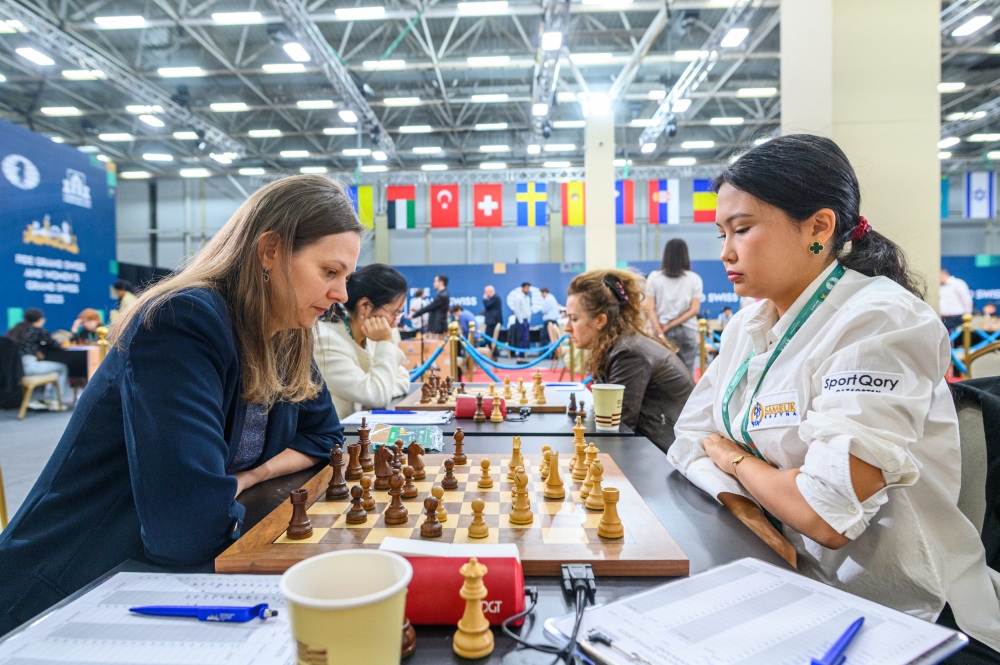
On board four, Bibisara Assaubayeva missed a chance to tie for first place with a win over Anna Muzychuk.
Playing White in the Giuoco Piano, Assaubayeva built a towering position by move 33 but misplayed. Muzychuk gave her a second chance in the endgame, but it too slipped away.
White is completely winning here but committed a decisive mistake with 47.Rxc2?? 47.Bb3 or 47.Bb5 were the winning moves.
Now after 47…Rxc2 48.Kxc2 Ke7! Black has built a fortress on the dark squares, placing her king on d6 and knight on f6. Despite two extra pawns, White can’t make progress and the game soon ended in a draw.
The full results and standings after the final, 11th Round, can be found here:
Women: grandswiss2025.fide.com/grand-swiss-women/
Open: grandswiss2025.fide.com/open/
Closing ceremony draws curtain on memorable Grand Swiss
The closing ceremony at the Silk Road by Minyoun Hotel conference hall provided a fitting end to what FIDE President Arkady Dvorkovich called “a truly magnificent event”.

After the national anthems of Uzbekistan and FIDE were performed, distinguished guests – including the Director of the Youth Affairs Agency of Uzbekistan Alisher Saʼdullayev and Samarkand Region Governor Adiz Boboev – delivered congratulatory speeches, followed by the official prize-giving ceremony conducted by Chief Arbiter Laurent Freyd.
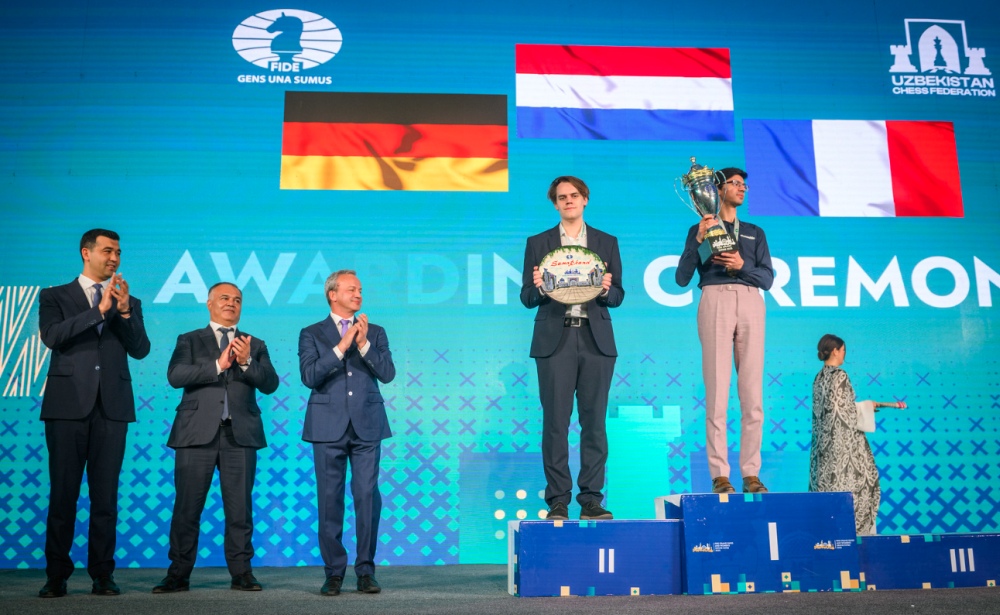
Arkady Dvorkovich, who awarded Anish Giri the victory cup, praised the tournament’s strength and drama. “Not only was this the strongest lineup of all the Grand Swiss tournaments so far, but it brought the most drama – with leadership ties and uncertainty well into the last round,” he said, congratulating the four qualifiers Giri, Bluebaum, Vaishali and Lagno before thanking all the participants for “putting on a great chess show which will be remembered in history.”
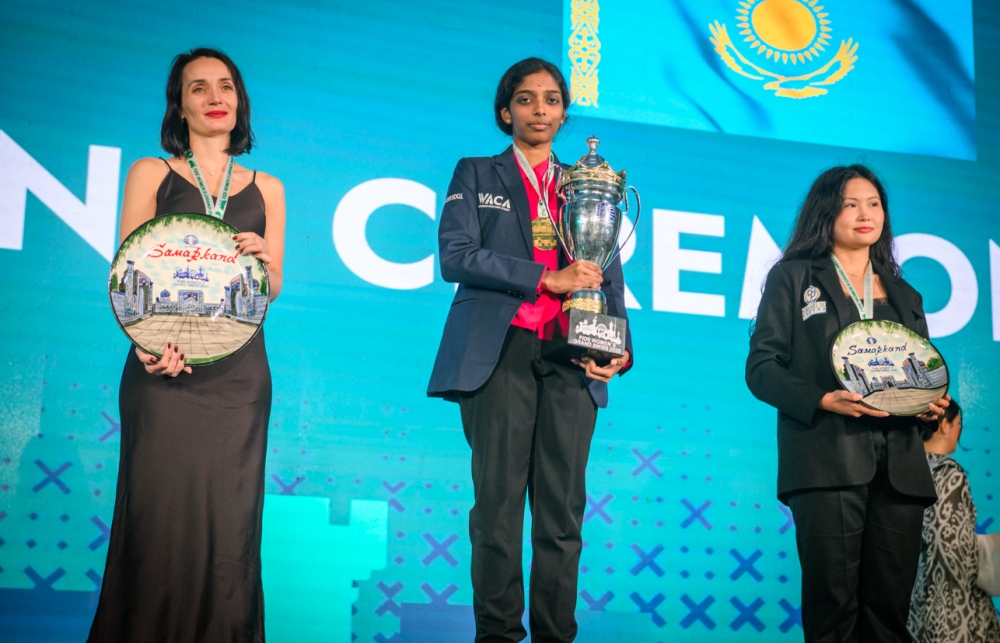
The FIDE President emphasised chess’s global reach and the symbolic importance of hosting the event in Samarkand, noting the ancient Silk Road city as having “strong roots” in chess history while also representing the game’s future.
With the 2026 Chess Olympiad also scheduled to take place in Samarkand, Dvorkovich expressed optimism about the continued partnership with Uzbekistan.
Written by Milan Dinic
Photos: Michal Walusza
About the event
The FIDE Grand Swiss is one of the most significant tournaments in the World Chess Championship cycle, featuring many of the world’s strongest chess players. Launched in 2019 (with the women’s event starting in 2021), the 11-round Swiss system tournament is held every two years. Considered as one of the most difficult and unpredictable chess events given its open nature, the top two finishers in both categories qualify directly for the World Candidates tournament where a challenger for the title of world champion is chosen.
The 2025 edition ran from 4th to 15th September at the EXPO Centre in Samarkand, Uzbekistan. There were 116 players taking part in the Open and 56 players in the Women’s competition. The total prize fund for the event is $855,000 – $625,000 for the Open and $230,000 for the Women’s event.
All the rounds were broadcast live on FIDE’s official YouTube channel.
For more information, visit the event website: grandswiss2025.fide.com/



